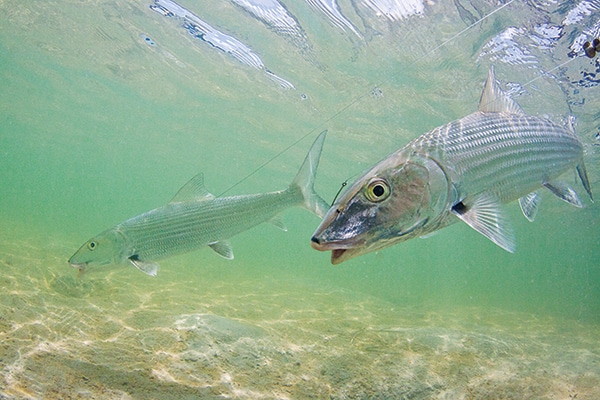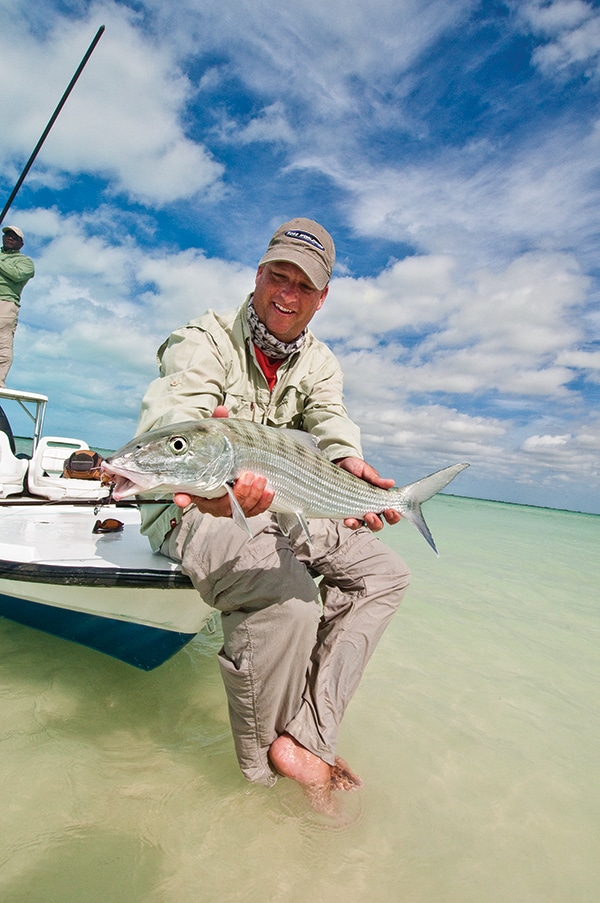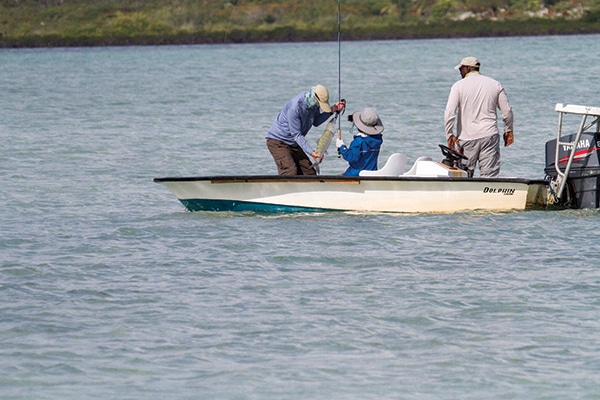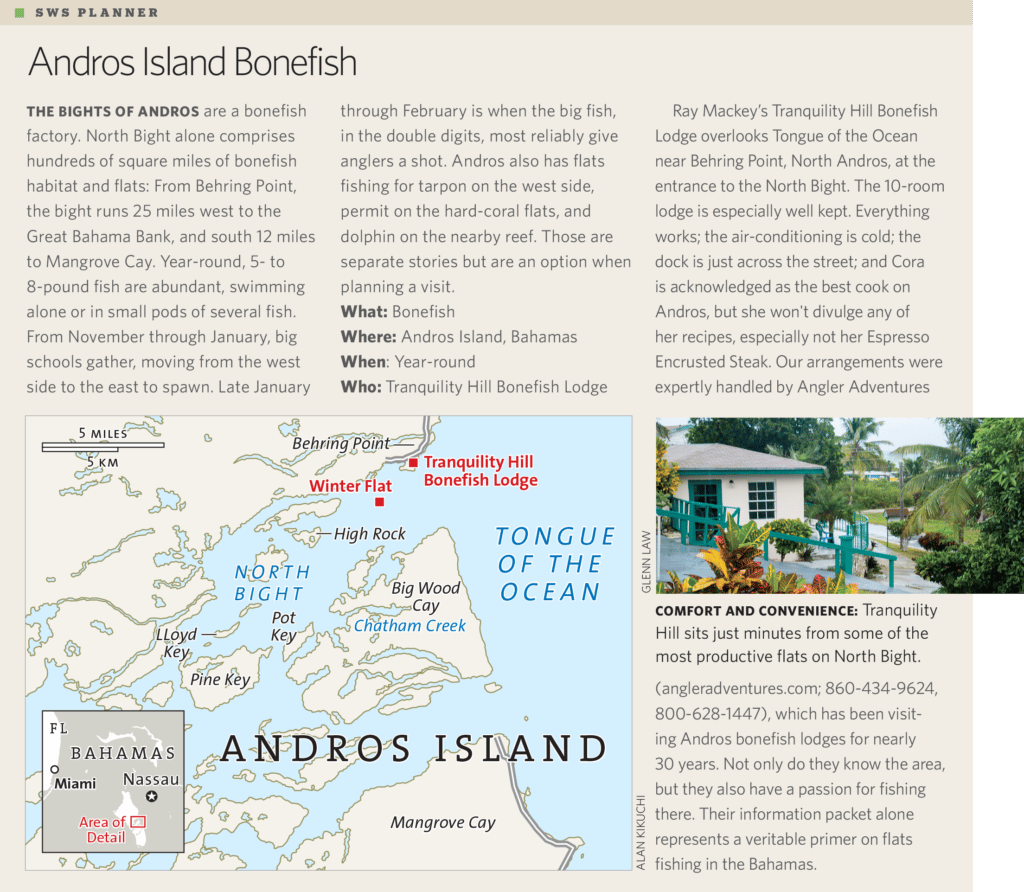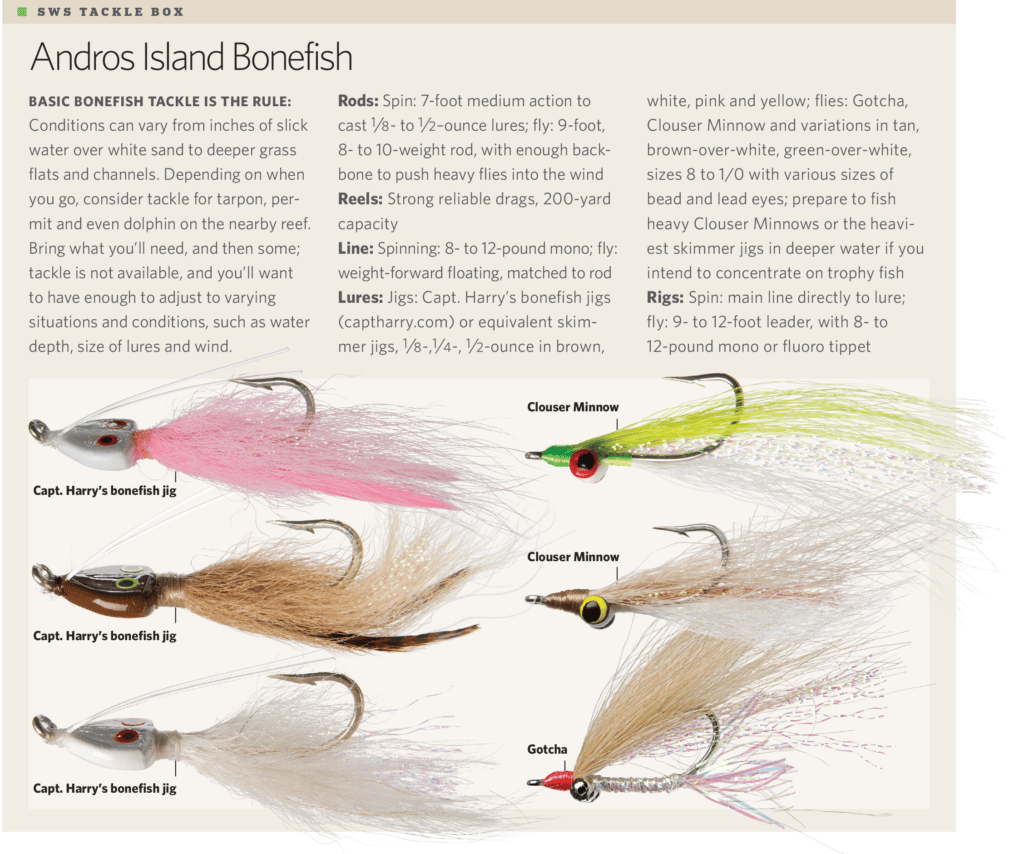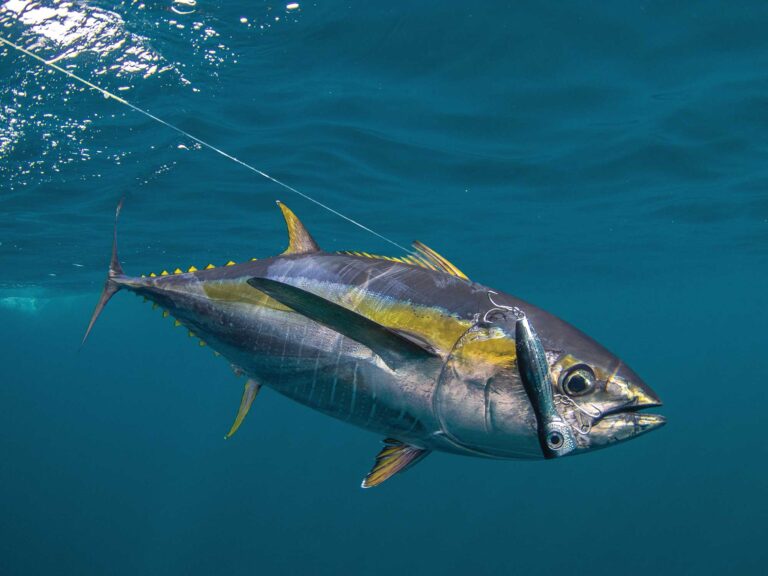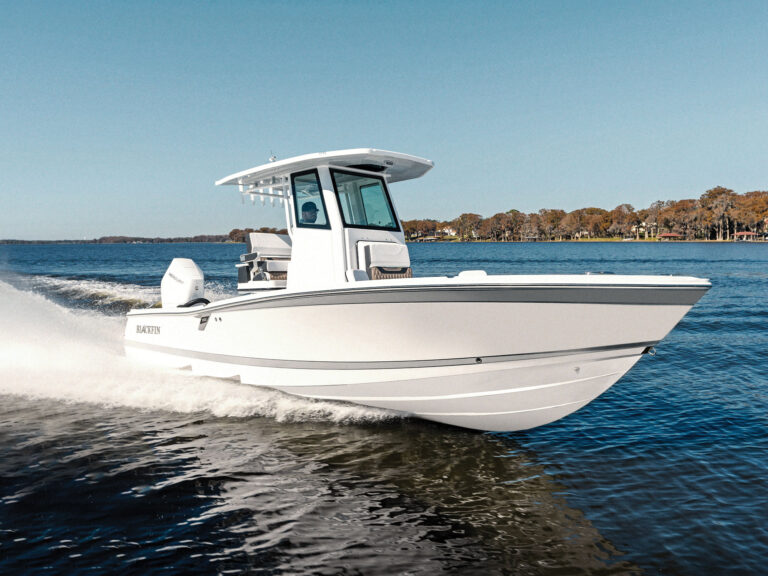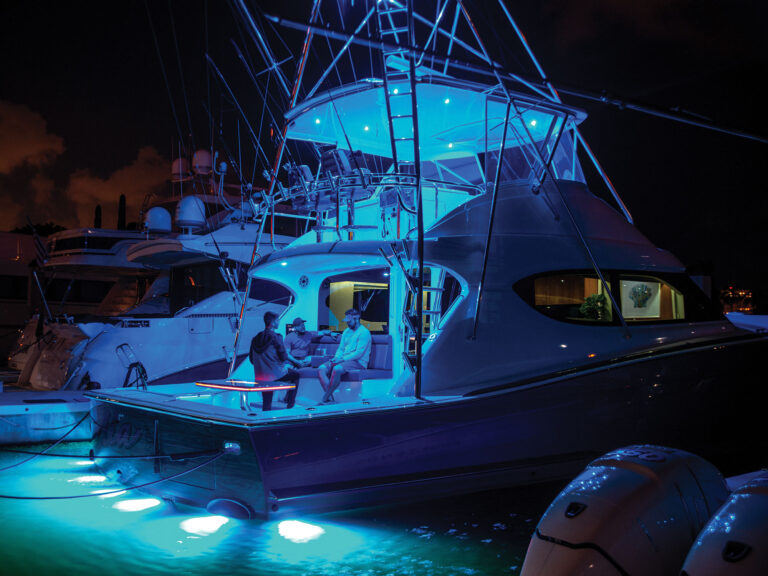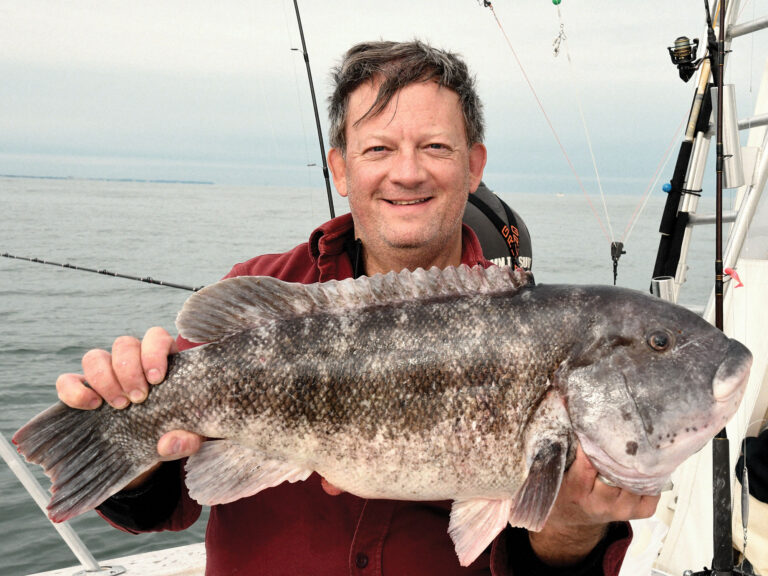We came off plane over a white sand strip that looked like a mangrove-lined runway. Fully a hundred yards wide, the white-sand and marl bottom provided the perfect backdrop against which to see cruising bonefish. Wind whipped the tops of the mangroves to either side, but guide Dwain Neymour easily pushed the skiff along in the lee, hunting this creek off the North Bight of Andros Island for the first fish of the day.
Windy conditions and scattered clouds had been the rule, but even against those obstacles, this area, the Dressing Room, offered both protection and excellent sight-fishing. We began seeing scattered pods of fish moving along with the tide, and after a few close calls, I dropped a cast 10 feet ahead of a feeding bonefish, and the skunk left the boat. Not a big fish, but enough to get us rolling.We poled out around the tip of Lloyd Key, and the wind hit us fully, out of the east. Back across the breadth of North Bight, the low morning sun ignited a thousand shades of aqua and turquoise over white sand and marl cut by blue-green channels — a subtle and vibrant palette that only Andros seems to do so well. Did I mention the stiff east wind? After all, this is Andros.
Prime Season
I’d chosen to visit at the end of January,**** for the full moon and the resultant spring tides. This time of year might produce unsettled weather but also has a legacy of producing the biggest bonefish, just in case there was a double-digit fish with my name on it haunting those hallowed flats. Tranquility Hill Bonefish Lodge served as my base of operations, a five minute run from the Winter Flat, a protected and productive stretch of shallows tucked into the lee of North Andros.
This flat, explained Neymour as we worked it later, is the go-to flat during the winter. The run from the lodge is short, and the fish are dependable regardless of conditions. The first morning we’d hit the Winter Flat at 8 o’clock, at the height of the flood tide. A peculiarity of this flat is the bonefish, which generally feed into the tide, here follow the flood tide across the shallows as the water grows deep enough for them to feed, but still a bit shallow for the sharks that prey on them. At full high tide, they move back into the mangroves to feed and rest unmolested; then as the tide falls, they follow it out of the mangrove roots and move back onto the flats.
Craters created by fish nosing into the marl to feed pocked the flat. Armed with a spinning rod spooled with 10-pound mono to back up an 8-weight fly rod, we crisscrossed the flat to intercept feeding fish. Andros guides grow up with a fly rod in hand, and they can be as hide-bound as a Connecticut dry fly fishermen about using it exclusively.
Simple Strategy
I kept the spinning rod stowed, but still armed and ready with a skimmer jig. Neymour coached me through a leader change, cutting back to 9 feet, with a 12-pound tippet loop-knotted to a No. 2 Clouser Minnow, and we were off. The bonefish, he said, were drawn to the “plop” of the lure during the cooler months. The drill is to spot feeding fish, drop a cast 10 feet in front of them, and allow them to work up to it. When they get close, retrieve slowly — 4 feet at a time — letting it settle to the bottom in between. Once they track it, let it fall, and they’ll pick it off the bottom.
It’s a simple formula, and it works. We landed four fish to 6 pounds that morning, until clouds killed the visibility. Over three days, North Bight gave up plenty of midsize fish, and we saw giants too, but they were unwilling to eat, or else they were beaten to the punch by more-aggressive smaller fish. The wind here is a given, often pushing guides and anglers to their limits. I cast so long and hard into the wind one afternoon that I returned to the dock with dreadlocks under my arms.
Still Wild
The last afternoon, Neymour took me**** to one of his favorite places, the east side of Big Wood Cay. Waves coming off Tongue of the Ocean roll across the grass flats to lap against the shoreline. The turbulence stirs the sand, providing a cafeteria line for fish working down the beach. We walked south along the edge, covering but a portion of the 6-plus miles of white-sand flats that stretch south along Big Wood, and cast to bonefish feeding down the beach, as well as pods of spooky fish tailing hard in the rapidly flooding tidal pools. We picked off a few, and watched more move on out of range.
It was a fitting end to a trip to Andros, which despite a long history and rich legacy of flats fishing, still holds an abundance of wild places waiting to be discovered — and double-digit bonefish that will have you mulling another visit.
